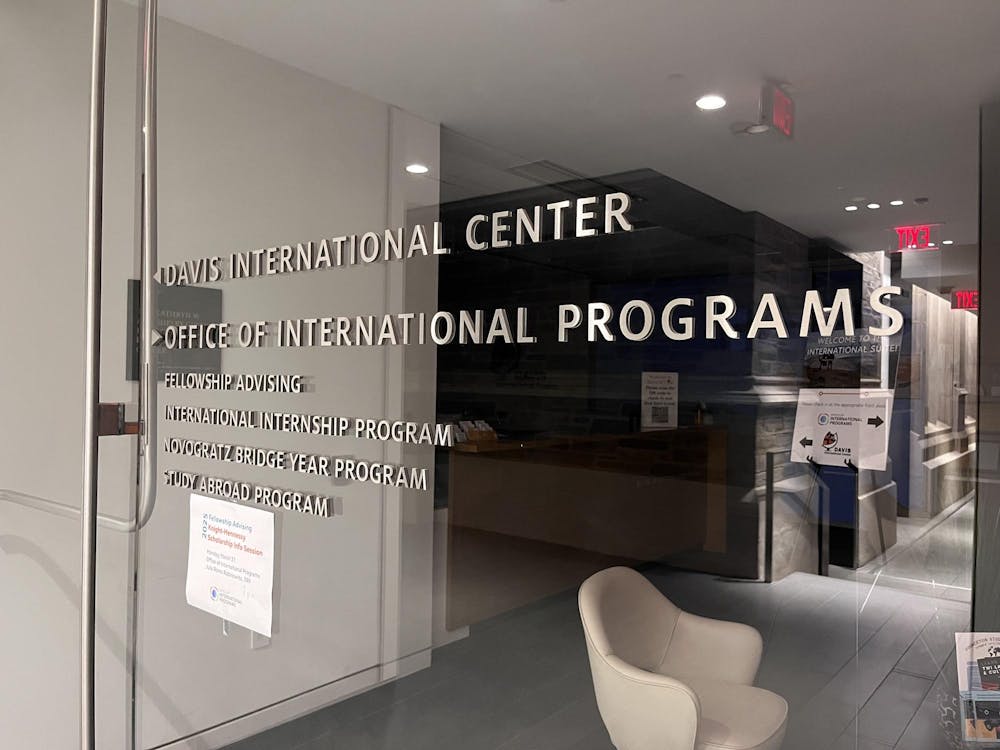Princeton’s art and archaeology department reflects the field’s changing demographics, with a predominantly male faculty and a primarily female student body. Only seven of the department’s 20 faculty members are female, while 43 of 50 concentrators are women.
Jerome Silbergeld GS ’69, a professor who specializes in Chinese art, said that the gender gap between students and faculty has existed in the field for decades.
“When I first took an art history course, a very high proportion of the students in the classroom were female,” Silbergeld recalled.
Today’s faculty demographics reflect hiring practices from decades ago.
“By far, most of the faculty is male, and that goes back to the time they were hired, when Princeton was an all-male undergraduate university,” Silbergeld explained.
Over the last few decades, this change has been gradual. “We have been, perhaps, slow ... to rectify that,” Silbergeld added.
Silbergeld cited gender discrimination as a cause for the slow change. “The few males in the classroom were heavily favored, and the females were strongly handicapped,” he said.
Across major universities and museums, most jobs belong to men, noted Brown, who specializes in Renaissance art. Brown said she believes this anomaly stems from a difference in the individuals who choose to enter the field.

“You have a great preponderance of women going into the field, and the few men who do are also very strong,” Brown said. “With women, you have a wider range of talent, and so you have very, very strong women, and then you have some who are just passing through and wouldn’t be as competitive.”
Brown also said that men and women approach the field differently.
“It’s often seen as a kind of a fallback for women who aren’t sure what they want to do — they like art, and they like the idea of museum work and that sort of thing,” she said.
Sam Lewis ’11, an art and archeology major, also noted the gender discrepancy.

“I do think that men in the department tend to be more serious about the pursuit of art history than women,” he said in an e-mail, noting that he chose a major that would help him acquire “important, yet non-business-specific, reasoning skills.”
Despite often holding important positions in the field, however, men may steer away from art history because of societal attitudes. “Art history doesn’t carry a strong macho factor, and in fact it never has,” Silbergeld said.
Will Martinez ’11, another art and archeology major, also said in an e-mail that existing stereotypes might explain the gender discrepancy in the field. “Studying economics or politics might have more masculine implications as modern culture drives home the image of the man working on Wall Street or running for political office,” he explained.
Lewis said he believes childhood experiences may be a factor in the department’s gender gap. “As kids, boys are often encouraged to engage in activities that have little to do with aesthetic sensibilities. With such strong emphasis on other things, artistic creativity may even appear as a bad thing,” he explained.
Professor Anne McCauley, who concentrates on the history of photography and modern art and serves as the department’s undergraduate representative, attributes lower male interest more specifically to economic factors. Many positions in the art world are filled by volunteers, making it more difficult to find a paid position, she said.
“To the extent that Princeton male students still feel that they have to be the primary breadwinner in a family, majoring in the arts might seem like a dangerous choice,” she said in an e-mail.
Historically, Brown said, women have been less focused on job prospects when choosing an undergraduate field. “[Women] are less concerned about the salary going forward, so it’s been seen traditionally as kind of a feminine field, which it’s not,” she explained.
Silbergeld, though recognizing that female concentrators far outnumber male concentrators in the department, pointed out that this was not necessarily an indicator of which students elected to take classes in the department.
“Last semester, 60 percent of my students were female,” he explained. “And this was for three- and four-hundred-level seminars.”
Though the faculty remains predominantly male, future hiring decisions might change the gender ratio, as several members of the art and archaeology department — including Brown — are retiring after the spring semester.
As for who will replace these professors, Brown said she is unsure about the prospects for change. “I don’t think anyone intends there to be a glass ceiling, but it happens,” she said. “I think it would be very easy to fall back to where it used to be.”
Silbergeld said he is more confident that the new appointments will bring gender equity. “In the last 10 years, we have hired predominantly female, not with the intent of hiring either males or females ... who we hope will get tenured.”
By continuing to hire the best scholars available, Silbergeld predicted, the gender gap among the faculty will erode. “I think that in time we will end up with a healthy proportion, and we have to keep working at that,” he said.







